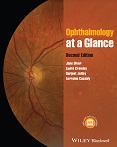- Home
- Cases
- Flashcards
- Figures
- Your feedback
- Become a reviewer
- More student books
- Student Apps
- Join an e-mail list


A 79-year-old retired farmer was referred to the Oculoplastic clinic. He lived a remote life in a small village and did not believe in seeing doctors. His family had come to see him from Australia (where he had also grown up) and were concerned regarding a lesion under his lower eyelid. You suspect this is a basal cell carcinoma (BCC) as it is a raised, pearly lesion with fine telangiectatic vessels. There is a localized loss of eyelashes (madorosis) and unilateral blepharitis on the lower lid.
1. Do you know any risk factors for BCC?
2. What diagnosis is important to exclude in patients with longstanding unilateral blepharitis?
3. What must you do to confirm your diagnosis?
The lesion is confirmed as a BCC. The son is concerned regarding systemic manifestations, as he had heard that skin cancers could spread to the rest of the body. Also, he was worried that his dad’s face would be completely distorted from surgery.
4. What types of dermatological malignancies commonly metastasise? Do BCCs usually spread locally or systemically?
5. How can you reassure his son about the surgical management of his father?
Please refer to the chapter of eyelid lumps (Chapter 26) to read about differential diagnoses.